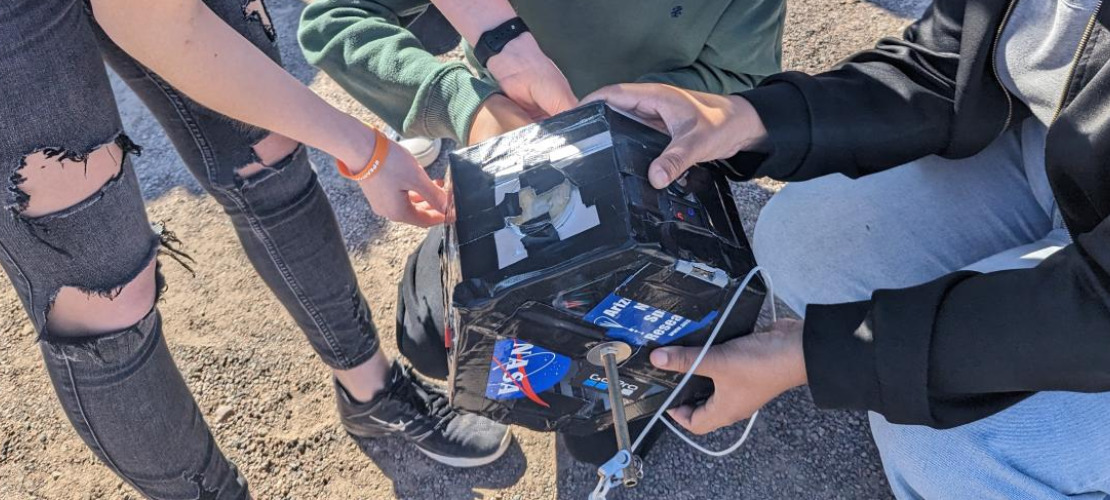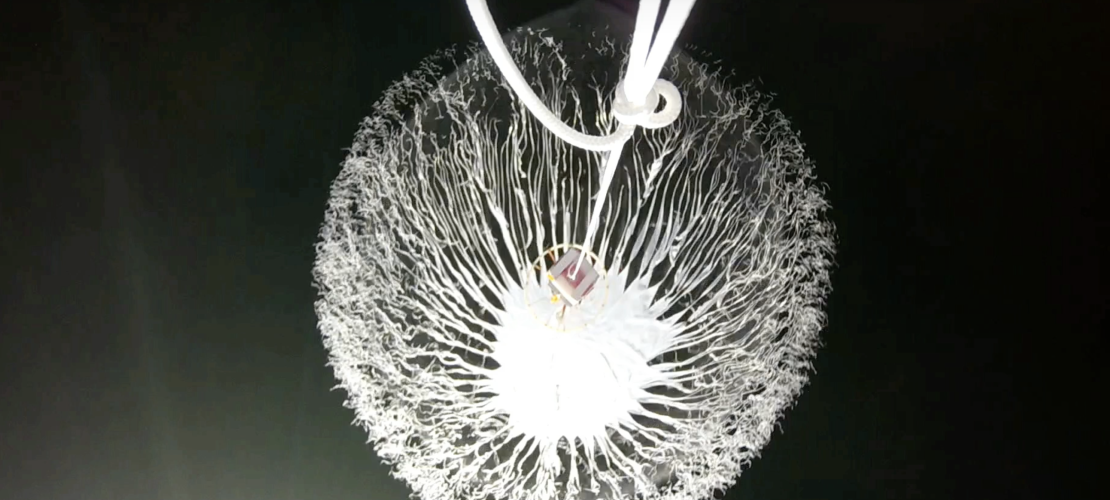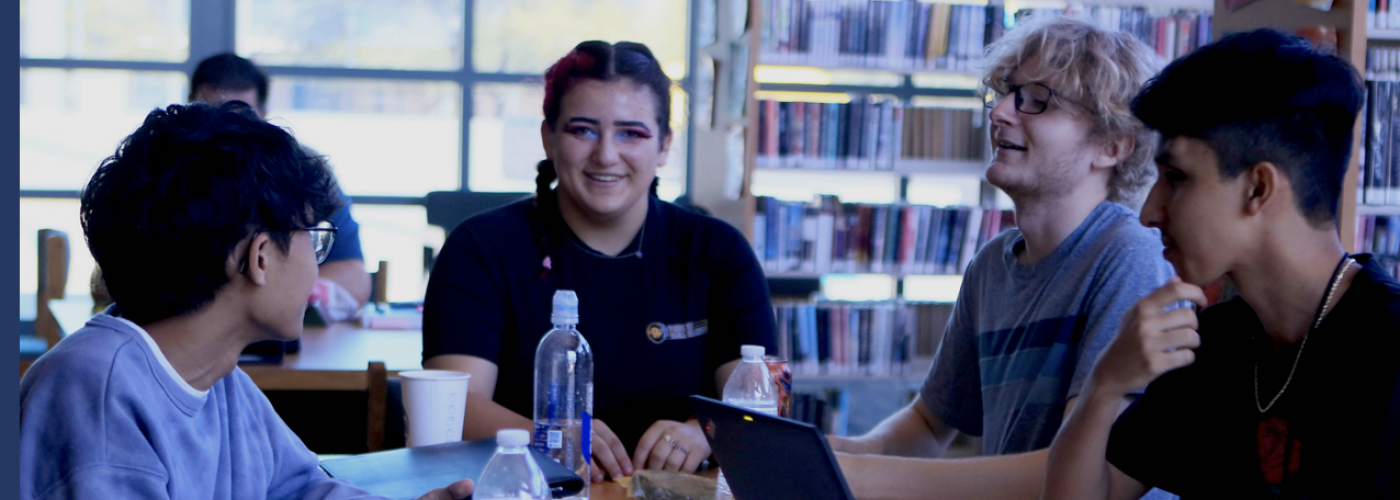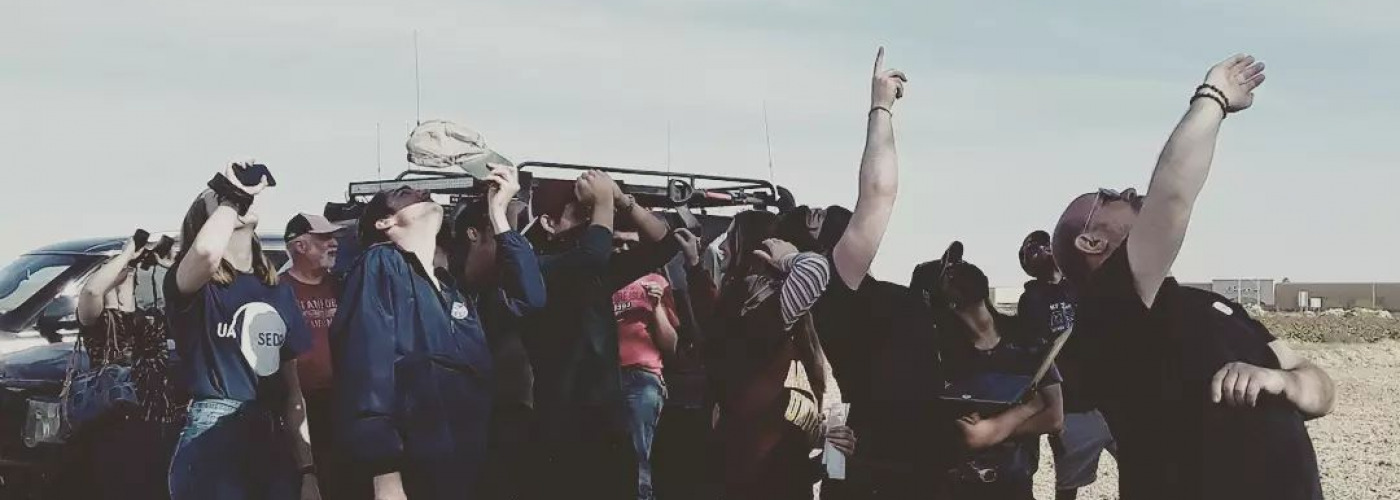ASCEND! Aerospace STEM Challenges to Educate New Discoverers
2025-2026 Important Dates
- November 21, 2025 - ASCEND PreLaunch Workshop
- November 22, 2025 - ASCEND Fall Launch
- March 27, 2026 - ASCEND PreLaunch Workshop
- March 28, 2026 - ASCEND Spring Launch
- April 17-18, 2026 - AZ Space Grant Statewide Student Research Symposium in Tempe, AZ
Background
"ASCEND!" (Aerospace STEM Challenges to Educate New Discoverers) is an Arizona Space Grant Consortium statewide Workforce Development program designed to involve undergraduate students from across Arizona in the full "design-build-fly-operate-analyze" cycle of a space mission. Across our state, student teams from The University of Arizona, Arizona State University, Embry-Riddle Aeronautical University, Arizona Western College, Glendale Community College, Pima Community College (NW), Central Arizona College (Signal Peak), Phoenix College, and Casa Grande Union High School, design and build small payloads for launch from high altitude weather balloons. Teams measure various atmospheric parameters as a function of altitude up to about 100,000 feet and some obtain a series of timed images of the Earth throughout the balloon's ascent to characterize surface features, cloud structure, and the Earth's curvature. Participation in this program is geared to complement regular classroom learning by offering direct hands-on immersion with the full mission cycle--something few NASA or aerospace industry scientists and engineers ever see through.
Take a look at this introductory ASCEND video created by Paul Ronquillo (former Phoenix College ASCEND student team lead).
Want more ASCEND tutorials? Check out Paul's accounts on YouTube and BitChute!
And find information on his GitHub Repository
Find information from our launch provider at Arizona Near Space Research (ANSR).
Each payload must contain an imaging component interfaced with a tracking device (altitude, latitude/longitude). In addition, atmospheric experiments may be determined by each university design team, depending upon goals determined in consultation with program mentors. Experiments may include gathering information to compare atmospheric layers, ozone, greenhouse gases, temperature/pressure/humidity, radiation, air quality, remote sensing and imaging, and more.
Additional and/or alternative innovative engineering or science projects, which are not related to an atmospheric study but which could benefit from the high altitude/low temperature environment (for example, testing the reliability of power cells under low temperature and low pressure conditions), are encouraged. These additional/alternative projects are subject to weight, size and cost restrictions determined for the project and the viability of the experiments in the extremes of the upper atmospheres, where temperatures drop to -60 or -70 °C and atmospheric pressures are nearly negligible.
- Building a light-weight, mechanically and thermally stable container for the experiments.
- Correlating the data from your design package with the standard ANSR launch package (i.e., at a minimum, your data/experiment must have a clock/timestamp that is synchronized with the ANSR clock) to allow correlation of the images and any atmospheric data with altitude and geographic location with appropriate timing circuits and self-contained power supplies to drive all components of the package.
- It is also desirable for your team to monitor and record telemetry for the balloon payload.
All costs (within a specified budget) will be provided for the project. Each semester, teams will congregate in central Arizona for Friday evening pre-launch training workshops followed by Saturday launch and chase-down activities.
Teams will have opportunities to discuss their ASCEND design with representatives from our ANSR launch providers and teams from other participating universities several times throughout the semester during monthly telecons. During these meetings, participants may ask questions, share experiences, and present their ideas for peer response.
In April, at the end of each program year, team members will present the results of their year's ASCEND! research and development projects at the statewide Arizona NASA Student Research Symposium in a session devoted to high altitude balloon science.
| Date | ASCEND! FLT# | ANSR Flt# | Launch site | Altitude (ft) | Notes |
|---|---|---|---|---|---|
| 03/28/2025 | 58 | 156 | Freeman Road exit, Gila Bend | 87,770 | Balloon 2 took 2 hours and 26 mins to achieve this altitude. |
| 03/28/2025 | 57 | 155 | Freeman Road exit, Gila Bend | 94,620 | |
| 11/23/2024 | 56 | 154 | Freeman Road exit, Gila Bend | 102,000 | |
| 11/23/2024 | 55 | 153 | Freeman Road exit, Gila Bend | 98,000 | |
| 5/11/2024 | 54 | 152 | Freeman Road exit, Gila Bend | 102,964 | Rescheduled launch from March 23, 2024. |
| 5/11/2024 | 53 | 151 | Freeman Road exit, Gila Bend | 99,000 | Rescheduled launch from March 23, 2024. |
| 11/18/2023 | 52 | 148 | Near AZ60 & I-10 Interchange | 96,906 | |
| 11/18/2023 | 51 | 147 | Near AZ60 & I-10 Interchange | 103,988 | |
| 04/01/2023 | 50 | 144 | Near AZ60 & I-10 Interchange | Upon filling balloon, ANSR noticed there was a hole in it so we had to fill a new balloon causing a slight delay. Balloon landed near Aguila, AZ in difficult area. ANSR had to retrieve the payloads and then distribute to the ASCEND teams. | |
| 04/01/2023 | 49 | 143 | Near AZ60 & I-10 Interchange | Balloon landed near Aguila, AZ in difficult area and had to be retrieved by ANSR to be handed off to the ASCEND student teams. | |
| 11/19/2022 | 48 | 141 | UA Maricopa Agricultural Center | 102,272 | Difficult retrieval; payloads landed quite a ways off road and required a hike to retrieve the payloads from a desert wash. |
| 11/19/2022 | 47 | 140 | UA Maricopa Agricultural Center | 100,420 | Upon burst, it appears that pieces of the balloon wrapped around the parachute and prevented it from fully opening. Quick descent and impact at ~55 mph. Payloads felt the impact! |
| 4/02/2022 | 46 | 138 | Freeman Road exit, Gila Bend | 97,000 | |
| 4/02/2022 | 45 | 137 | Freeman Road exit, Gila Bend | 91,000 | |
| 11/20/2021 | 44 | 135 | AZ-85, approx. 12mi S. of Gila Bend | 102,303 | ANSR flight-135 climbed at a faster rate than ANSR flight-134. ADSB-B for 135 worked throughout the flight. |
| 11/20/2021 | 43 | 134 | AZ-85, approx. 12mi S. of Gila Bend | 103,670 | The landing site was more than 20mi east of the predicted area. The ADS-B for ANSR-134 worked shortly after liftoff but then stopped working. Upon recovery, it was discovered that the battery in the case had shifted during flight and pulled the power pole connector apart. |
| 3/27/2021 | 42 | 132 | UA Maricopa Agricultural Center | ||
| 3/27/2021 | 41 | 131 | UA Maricopa Agricultural Center | ||
| 10/24/2020 | 40 | 130 | Gila Bend, AZ | Make-up flight for Spring 2020 launch that was canceled due to Covid | |
| 11/23/2019 | 39 | 129 | Pinal County, AZ | 105,882 | 2nd balloon (129) passed first balloon, but 128 went farther down range due to slower ascent rate |
| 11/23/2019 | 38 | 128 | Pinal County, AZ | 106,909 | 2nd balloon (129) passed first balloon, but 128 went farther down range due to slower ascent rate |
| 11/12/2019 | 37 | 127 | Dine College Campus, Tsaile, AZ | 101,755 | |
| 3/30/2019 | 36 | 124 | Pinal County, AZ | 91,202 | onboard data loggers may have captured a slightly higher altitude |
| 3/30/2019 | 35 | 123 | Pinal County, AZ | 96,819 | onboard data loggers may have captured a slightly higher altitude |
| 3/26/2019 | 34 | 122 | Dine College campus, Tsaile, AZ | 75,927 | onboard data loggers may have captured a slightly higher altitude |
| 11/17/2018 | 33 | 121 | Maricopa | 103,218 | |
| 11/17/2018 | 32 | 120 | Maricopa | 106,555 | |
| 3/3/2018 | 31 | 116 | Dateland | 96,400 | |
| 3/3/2018 | 30 | 115 | Dateland | 96,400 | |
| 11/17/2017 | 29 | 113 | Gila Bend | 97,500 | |
| 11/17/2017 | 28 | 112 | Gila Bend | 97,500 | |
| 4/1/2017 | 27 | 106 | Maricopa | ||
| 4/1/2017 | 26 | 105 | Maricopa | ||
| 11/19/2016 | 25 | 104 | Stanfield | 91,405 | |
| 11/19/2016 | 24 | 103 | Stanfield | 101,692 | |
| 4/2/2016 | 23 | 98 | Maricopa | 94,467 | |
| 4/2/2016 | 22 | 97 | Maricopa | 96,619 | |
| 11/21/2015 | 21 | 95 | Maricopa | 73,640 | |
| 11/21/2015 | 20 | 94 | Maricopa | 78,816 | |
| 3/1/2015 | 19 | 88 | W. Pinal Park | 94,688 | |
| 11/1/2014 | 18 | 86 | Maricopa | 93,483 | |
| 3/29/2014 | 17 | 81 | Freeman Exit I-8 | 73,794 | |
| 11/23/2013 | 16 | 78 | Dateland | 86,349 | |
| 3/23/2013 | 15 | 74 | Maricopa | 93,000 | |
| 11/17/2012 | 14 | 71 | Maricopa | 97,940 | |
| 3/31/2012 | 13 | 67 | Maricopa | 97,940 | |
| 11/19/2011 | 12 | 65 | Quartzsite | 89,977 | |
| 3/26/2011 | 11 | 60 | Gila Bend | 85,978 | |
| 11/20/2010 | 10 | 59 | Quartzsite | 96,214 | |
| 3/27/2010 | 9 | 54 | Gila Bend | 86,450 | |
| 11/21/2009 | 8 | 52 | Gila Bend | 93,538 | |
| 4/4/2009 | 7 | 48 | Gila Bend | 89,676 | |
| 11/22/2008 | 6 | 47 | Goldwater Rng | 95,867 | |
| 4/5/2008 | 5 | 43 | Gila Bend | 92,209 | |
| 11/17/2007 | 4 | 41 | Maricopa | 99,229 | |
| 4/14/2007 | 3 | 37 | Freeman Exit I-8 | 92,834 | |
| 1/27/2007 | 2 | 34 | Maricopa | 98,856 | delayed from 11/6/2006 (Weather) |
| 11/19/2005 | 1 | 27 | Maricopa | 105,761 |






